
CATEGORIES:
BiologyChemistryConstructionCultureEcologyEconomyElectronicsFinanceGeographyHistoryInformaticsLawMathematicsMechanicsMedicineOtherPedagogyPhilosophyPhysicsPolicyPsychologySociologySportTourism
Youth in Great Britain
 Young people in Great Britain have a wide variety of interests apart from their school work. As children, both boys and girls play many of the same games. They swim, play baseball and basketball, go boating and camping, they have fun in many kinds of sport and outdoor activities.
Young people in Great Britain have a wide variety of interests apart from their school work. As children, both boys and girls play many of the same games. They swim, play baseball and basketball, go boating and camping, they have fun in many kinds of sport and outdoor activities.
Numerous youth organizations give young people a chance to develop and broaden their interests and to gain experience in working with others. Civic, cultural, and religious groups also sponsor special programmes for young people.
Secondary schools offer pupils a wide variety of activities to develop talents and skills. There are clubs for photography, music, shaping, theatre, art, stamp collecting, nature sciences, and debating.



Most of schools and colleges have some form of student government with elections to choose class representatives. They also organize social activities and take part in such community projects as raising money for public welfare.
 Many young people hold part-time jobs after school hours. Thousands of them earn money delivering newspapers or helping care for infants and young children in private homes.
Many young people hold part-time jobs after school hours. Thousands of them earn money delivering newspapers or helping care for infants and young children in private homes.
For several weeks during the summer hollidays, about five million school-aged children go to camps where they get plenty of recreational activity and learn various skills. College students often work as counselors at these camps during their vacation.
Sports in England
Sports play an important part in the life of the Englishmen and is a popular leisure activity. Many of the world's famous sports began in England, including cricket, football, lawn tennis and rugby.
England’s national sport is cricket although to many people football (soccer) is seen as our national sport. Football is our most popular sport. Some of England’s football teams are world famous, the most famous being Manchester United, Arsenal and Liverpool.
Cricket
Cricket is played on village greens on Sundays from April to August. The rules of cricket became the responsibility, in the 18th century, of the Marylebone Cricket Club(MCC), based at Lord’s cricket ground in north London.
 How to play Cricket
How to play Cricket
Teams are made up of 11 players each. They play with a ball slightly smaller than a baseball and a bat shaped like a paddle. Two batters stand in front of wickets, set about 20 metres apart. Each wicket consists of three wooden rods (stumps) pushed into the ground, with two small pieces of wood (bails) balanced on top. A member of the opposing team (the bowler) throws the ball towards one of the batters, who must hit the ball so that it does not knock a bail off the wicket. If the ball travels far enough, the two batters run back and forth between the wickets while the fielders on the opposing team try to catch the ball. The game is scored according to the number of runs, which is the number of times the batters exchange places.
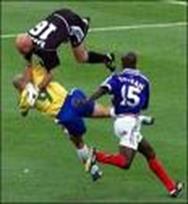 Football (Soccer)
Football (Soccer)
Football is undoubtedly the most popular sport in England, and has been played for hundreds of years.
In the English Football League there are 92 professional clubs. These are semi-professional, so most players have other full-time jobs. Hundreds of thousands of people also play football in parks and playgrounds just for fun.
The highlight of the English football year is the FA (Football Association) Cup Final each May.
 Rugby
Rugby
Rugby originated from Rugby school in Warwickshire. It is similar to football, but played with an oval ball. Players can carry the ball and tackle each other. The best rugby teams compete in the Super League final each September.
For many years Rugby was only played by the rich upper classes, but now it is popular all over the country. There are two different types of rugby – Rugby League, played mainly in the north of England, and Rugby Union, played in the rest of England, Scotland, Wales and Ireland. England, Scotland, Wales and Ireland, together with France and Italy, play in an annual tournament called the Six Nations.
American Football derived from our game of Rugby also Baseball derived from the old English game of Rounders.
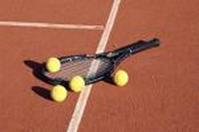 Tennis
Tennis
The world’s most famous tennis tournament is Wimbledon. It started at a small club in south London in the nineteenth century. It begins on the nearest Monday to June 22, at a time when English often have the finest weather. Millions of people watch the Championships on TV live.
It is traditional for visitors to eat strawberries and cream whilst they watch the tennis.
 Netball
Netball
Netball is the largest female team sport in England.The sport is played almost exclusively by women and girls, although male participation has increased in recent years.
Basketball
Over 3 million people participate in basketball in the UK.
 Golf
Golf
Scotland is traditionally regarded as the home of golf.There are over 400 golf courses in Scotland alone. The most important golf club in Scotland is in the seaside town of St. Andrews, near Dundee.
Horse racing
 Horseracing, the sport of Kings is a very popular sportwith meetings being held every day throughout the year. The Derby originated here, as did The Grand National which is the hardest horse race in the world.
Horseracing, the sport of Kings is a very popular sportwith meetings being held every day throughout the year. The Derby originated here, as did The Grand National which is the hardest horse race in the world.
Horse racing and greyhound racing are popular spectator sports. People can place bets on the races at legal off-track betting shops. Some of the best-known horse races are held at Ascot, Newmarket, Goodwood and Epsom.
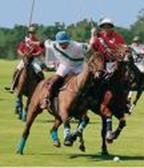 Ascot, a small town in the south of England, becomes the centre of horse-racing world for one week in June. It’s called Royal Ascot because the Queen always goes to Ascot. She has a lot of racehorses and likes to watch racing.
Ascot, a small town in the south of England, becomes the centre of horse-racing world for one week in June. It’s called Royal Ascot because the Queen always goes to Ascot. She has a lot of racehorses and likes to watch racing.
Polo
Another equestrian sport is polo, brought to Britain from India in the 19th Century by army officers. It is the fastest ball sport in the world.
Polo is played with four men on horses to a team. A ball is hit with a stick towards the goal, one at each end of a 300 yard long by 160 yard wide field...
 Table Tennis (ping pong)
Table Tennis (ping pong)
 Table tennis was invented in England in 1880. It began with Cambridge University students using cigar boxes and champagne corks.
Table tennis was invented in England in 1880. It began with Cambridge University students using cigar boxes and champagne corks.
Although the game originated in England, British players don’t have much luck in international championships.
Badminton
Badminton takes its name from the Duke of Beaufort’s country home, Badminton House, where the sport was first played in the 19th century.
 University Boat Race
University Boat Race
In the nineteenth century, students at Oxford and Cambridge, Britain's two oldest universities, were huge fans of rowing. In 1829, the schools agreed to hold a race against each other for the first time on the Thames River. The Oxford boat won and a tradition was born.Today, the University Boat Race is held every spring in either late March or early April.
 Fishing (Angling)
Fishing (Angling)
Angling is one of the most popular sports in the UK, with an estimated 3.3 million people participating in the sport on a regular basis. Fishermen can be see sitting beside rivers and lakes.
 Bowls
Bowls
The two main forms of bowls are lawn flat green (outdoor and indoor) and crown green.
 Boxing
Boxing
Boxing in its modern form is based on the rules established by the Marquess of Queensberry in 1865. In the UK boxing is both amateur and professional, and strict medical regulations are applied in both.
Swimming
Swimming is also a popular pastime and enjoyed by people of all ages.
 Martial arts
Martial arts
Various martial arts, mainly derived from the Far East, are practised in the UK, such as judo and karate.
 Darts
Darts
Darts is a very popular pub game.The game of darts, as it is today, was invented in the north of England in a town called Grimsby. However, the origins of the game date back to at least the Middle Ages.
Boxing Day Hunts
Traditionally Boxing Day is a day for fox hunting. The huntsmen and huntswomen ride horses. They use dogs too. The dogs (fox hounds) follow the smell of the fox. Then the huntsmen and huntswomen follow the hounds.
Before a Boxing Day hunt, the huntsmen and huntswomen drink hot wine. But the tradition of the December 26th is changing. Now, some people want to stop Boxing Day hunts (and other hunts too) They don't like foxhunting. For them it is not a sport - it is cruel.
 Famous Ukrainian Sportsmen
Famous Ukrainian Sportsmen
Athlete, repeated world, Europe and Olympic champion.
Ukrainian sportsman Sergiy Bubka – six-times world champion. He has set fabulous world records: 6,14 m outdoor and 6,15 m indoor. He is the Head of the Athletic Commission of the International Olympic Committee.

Yana Klochkova – swimming master of international class repeated Olympic, world and Europe champion and record-breaker, high qualification trainer of the Main Administration of internal forces of MIA OF Ukraine team.

Star of the Ukrainian and world football. His sport career started in the football team “Dynamo” (Kyiv) under the direction of Valeriy Lobanovskyi. Andriy Shevchenko is a Champion of Ukraine (1995-1999), the best player in the 1998-1999 Champions League, holder of the UEFA Champions League Cup (2003). The sportsman played for the Italian football club “Milan”. Today he plays for the National Team of Ukraine and the English football club “Chelsea”.
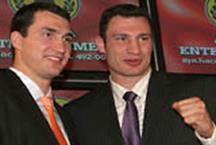 Vitaliy Klychko (born on July 19, 1971) is a professional boxer and was WBC and Ring heavyweight champion. He retired in 2005 and announced his comeback in 2007. He has the highest knockout percentage (92%) of any heavyweight champion in overall fights and is one of few heavyweight champions never to have been knocked down professionally.
Vitaliy Klychko (born on July 19, 1971) is a professional boxer and was WBC and Ring heavyweight champion. He retired in 2005 and announced his comeback in 2007. He has the highest knockout percentage (92%) of any heavyweight champion in overall fights and is one of few heavyweight champions never to have been knocked down professionally.
His younger brother, Vladimir Klychko (born on March 25, 1976), is the current IBF, WBO & IBO world heavyweight champion.
I appreciate those people who pay much attention to sport. I think sport keeps people fit and healthy and also makes them better disciplined in their daily activities.
The Olympic Games


 The Olympics have a very long history. They began in 776 BC, and took place for nearly 1200 years at Olympia, Greece. The citizens of all the Greek states were invited to take part in the games. The prizes were wreaths made of branches of olive trees. Ancient Olympic Games were a great athletic festival and included many different kinds of sports: running, boxing, discus throwing, wrestling, the pentathlon (five different sports) and others. In 394 AD the games were stopped by the Roman Emperor Theodosius.
The Olympics have a very long history. They began in 776 BC, and took place for nearly 1200 years at Olympia, Greece. The citizens of all the Greek states were invited to take part in the games. The prizes were wreaths made of branches of olive trees. Ancient Olympic Games were a great athletic festival and included many different kinds of sports: running, boxing, discus throwing, wrestling, the pentathlon (five different sports) and others. In 394 AD the games were stopped by the Roman Emperor Theodosius.
 Only fifteen years later, in 1894, a Frenchman, Baron Pierre de Coubertin, managed to persuade people from fifteen countries to start Olympic Games again. The International Olympic Committee was set up in 1894, and the first of the modern series of the Games took place in Athens two years later, in 1896. There were competitions in many kinds of sports: running, jumping, and boxing. All the nations of the world were invited to send their athletic teams. From then on the Olympic Games have been international and the number of events on the programme has increased.
Only fifteen years later, in 1894, a Frenchman, Baron Pierre de Coubertin, managed to persuade people from fifteen countries to start Olympic Games again. The International Olympic Committee was set up in 1894, and the first of the modern series of the Games took place in Athens two years later, in 1896. There were competitions in many kinds of sports: running, jumping, and boxing. All the nations of the world were invited to send their athletic teams. From then on the Olympic Games have been international and the number of events on the programme has increased.
In these games only amateurs or non-professional athletes can take part. Each country sends teams for as many different events as possible. The winners of each event are given a certain number of points. The International Olympic Committee decides where each Olympics will take place. They ask a city (not a country) to be the host.
The Olympic Games are attended by thousands and thousands of people every time they are held. They provide an opportunity for lovers of sports of all nations to meet together.
Ukrainian Writer
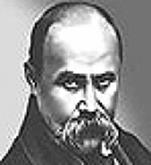
Taras Hryhorovych Shevchenko (March 9, 1814 - March 10, 1861) was a Ukrainian poet, also an artist and a humanist. His literary heritage is regarded to be the foundation of modern Ukrainian literature and, to a large extent, of modern Ukrainian language. Shevchenko also wrote in Russian and left many masterpieces of his artistic work.
He was born into a serf family in the village of Moryntsi, of Kiev Governorate of the Russian Empire (now in Cherkasy Oblast, Ukraine. Shevchenko was orphaned at the age of eleven. He was taught how to read by a village precentor, and loved to draw at every opportunity. Shevchenko served his owner Pavel Engelhardt in Vilnius (1828-1831) and then Saint Petersburg.
Engelhardt noticed Shevchenko’s artistic talent, and in Saint Petersburg he apprenticed him to the painter Vasiliy Shiriaev for four years. There he met the Ukrainian artist Ivan Soshenko, who introduced him to other compatriots, such as Yevhen Hrebinka and Vasyl Hryhorovych, and to the Russian painter Alexey Venetsianov. Through these men Shevchenko also met the famous painter and professor Karl Briullov, who donated his portrait of the Russian poet Vasily Zhukovsky as a lottery prize, whose proceeds were used to buy Shevchenko’s freedom on May 5, 1838.
In the same year Shevchenko was accepted as a student into the Academy of Arts in the workshop of Karl Briullov. The next year he became a resident student at the Association for the Encouragement of Artists. At the annual examinations at the Imperial Academy of Arts, Shevchenko was given a Silver Medal for a landscape. In 1840 he again received the Silver Medal, this time for his first oil painting, The Beggar Boy Giving Bread to a Dog.
He began writing poetry while he was a serf and in 1840 his first collection of poetry, Kobzar, was published.
In 1841, the epic poem Haidamaky was released. In September of 1841, Shevchenko was awarded his third Silver Medal for The Gypsy Fortune Teller. Shevchenko also wrote plays. In 1842, he released a part of the tragedy Nykyta Hayday and in 1843 he completed the drama Nazar Stodolya.
While residing in Saint Petersburg, Shevchenko made three trips to Ukraine, in 1843, 1845, and 1846. The difficult conditions under which his countrymen lived had a profound impact on the poet-painter. Shevchenko visited his still enserfed siblings and other relatives, met with prominent Ukrainian writers and intellectuals such as: Yevhen Hrebinka, Panteleimon Kulish, and Mykhaylo Maksymovych, and was befriended by the princely Repnin family especially Varvara Repnina.
In 1844, distressed by the tsarist oppression and destruction of Ukraine, Shevchenko decided to capture some of his homeland’s historical ruins and cultural monuments in an album of etchings, which he called Picturesque Ukraine.
On March 22, 1845, the Council of the Academy of Arts decided to grant Shevchenko the title of an artist. He again travelled to Ukraine where he met the historian, Nikolay Kostomarov and other members of the Brotherhood of Saints Cyril and Methodius, a secret political society, created to advocate a wide set of political reforms in the Russian Empire. Upon the society’s suppression by the authorities, Shevchenko was arrested along with other members on April 5, 1847. Although he probably was not an official member of the Brotherhood, during the search his poem "The Dream" ("Son") was found. This poem criticized imperial rule and therefore was considered extremely dangerous and of all the members of the dismantled society Shevchenko was punished most severely.
Shevchenko was sent to prison in Saint Petersburg. He was exiled as a private with the Russian military Orenburg garrison at Orsk, near Orenburg, near the Ural Mountains. Tsar Nicholas I, confirming his sentence, added to it, "Under the strictest surveillance, with a ban on writing and painting." It was not until 1857 that Shevchenko finally returned from exile after receiving a pardon, though he was not permitted to return to St. Petersburg but was exiled to Nizhniy Novgorod. In May of 1859, Shevchenko got permission to go to Ukraine. He intended to buy a plot of land not far from the village of Pekariv and settle in Ukraine. In July, he was arrested on a charge of blasphemy, but was released and ordered to return to St. Petersburg.
Taras Shevchenko spent the last years of his life working on new poetry, paintings, and engravings, as well as editing his older works. But after his difficult years in exile his final illness proved too much. Shevchenko died in Saint Petersburg on March 10, 1861. He was first buried at the Smolensk Cemetery in Saint Petersburg. However, fulfilling Shevchenko’s wish, as expressed in his poem "Testament" (Zapovit), to be buried in Ukraine, his friends arranged to transfer his remains by train to Moscow and then by horse-drawn wagon to his native land. Shevchenko’s remains were buried on May 8 on Chernecha Hora (Monk’s Hill; now Tarasova Hora) by the Dnieper River near Kaniv. A tall mound was erected over his grave, now a memorial part of the Kaniv Museum-Preserve.
The poet died seven days before the Emancipation of Serfs was announced.
Date: 2016-01-03; view: 3329
| <== previous page | | | next page ==> |
| The Palace of Westminster (Houses of Parliament) | | | Monuments and Memorials |